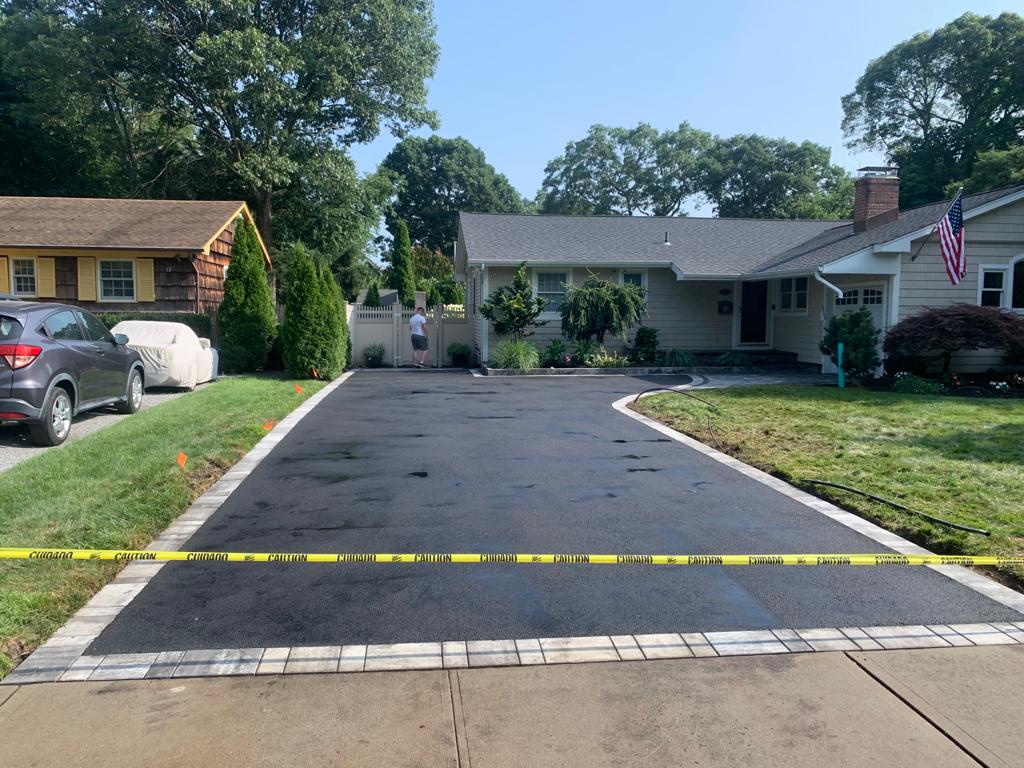
Understanding Asphalt and Blacktop: Similarities and Differences
Blacktop and asphalt are often confused with each other. However, while they might contain the same ingredients, they are not the same. The proportions of the ingredients and other factors differentiate these substances, making them either an asphalt surface or a blacktop surface.
Shared Characteristics of Blacktop and Asphalt
There are multiple reasons why the terminologies blacktop and asphalt are often considered synonyms. They share a few critical similarities that contribute to this confusion. Let’s delve into the qualities that both these materials have in common.
Composition
Both blacktop and asphalt are made from the same fundamental ingredients – crushed stone and bitumen. These components are mixed in different proportions before they are poured for paving.
Quality
Blacktop and asphalt are known for their reliability and durability. They are resilient materials that can withstand numerous repaving jobs, making them ideal for heavy-duty projects.
Quick Drying
Unlike concrete, which requires an extensive drying process before it can safely bear the weight of a vehicle, both asphalt and blacktop can be driven on much sooner. This quality makes them particularly convenient for projects that require a quick turnaround time.
Physical Appearance
Another reason blacktop and asphalt are often confused is their physical appearance. Both materials are dark in color, often appearing black or dark grey depending on their age and wear.
The Differences between Blacktop and Asphalt
While there are apparent similarities, blacktop and asphalt are not the same. The differences lie in the specific measurements of each ingredient used in the mix, the temperature at which they are mixed, and their suitable applications.
Ingredient Ratio
Even though both blacktop and asphalt are made up of crushed stone and bitumen, the proportions used differ. Asphalt generally contains a higher percentage of crushed stone, which gives the material strength and durability.
Temperature of Mixing
The temperature of the mixed ingredients also differs between blacktop and asphalt. Asphalt requires higher temperatures than blacktop, which can affect the time and method of installation.
Applications
The unique properties of blacktop and asphalt make them suitable for different applications. Asphalt is commonly used for highways and airport runways due to its durability and strength. With its lower stone content and mixing temperature, blacktop is often used for residential driveways and playgrounds.
In conclusion, while blacktop and asphalt share many similar characteristics, they are distinct materials with their specific uses. Understanding these differences can help you choose the right material for different paving projects.
Aggregate Size
Nominal aggregate size dictates lift thickness. Minimum lift thickness should be at least three times the nominal maximum aggregate size to ensure aggregate can align during compaction to achieve the required density and ensure the mix is impermeable. Therefore, the desired lift thickness can direct the decision on the nominal aggregate size.
The maximum lift thickness also depends upon the compaction equipment used. When static steel-wheeled rollers are used, the maximum lift thickness that can be properly compacted is 3 inches. When pneumatic or vibratory rollers are used, the maximum thickness of lift that can be compacted is almost unlimited. Generally, lift thicknesses are limited to 6 or 8 inches. Proper placement becomes a problem in lifts that are thicker than 6 or 8 inches.
Compaction is not an issue for open-graded mixes since they are intended to remain very open. Therefore, the maximum size aggregate can be as much as 80 percent of the lift thickness.
For more information, you can view asphalt driveway Suffolk County or call us on (631) 660 4427 to discuss the work directly with one of our contractors.
WE OFFER 100% FREE ESTIMATES
HIGHLY RATED & LOCAL COMPANY
WE USE ONLY THE FINEST PRODUCTS